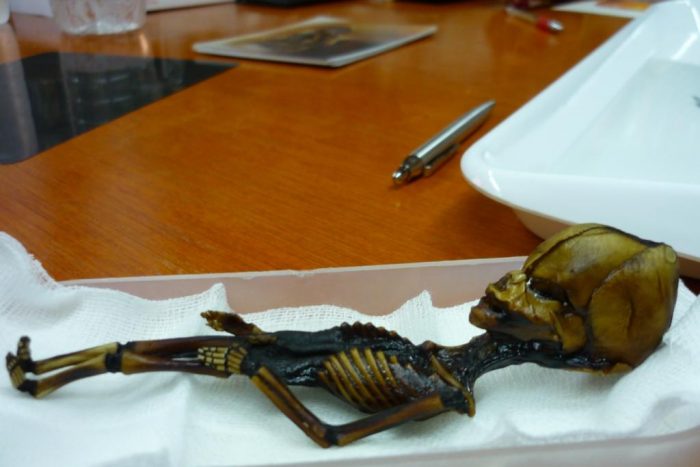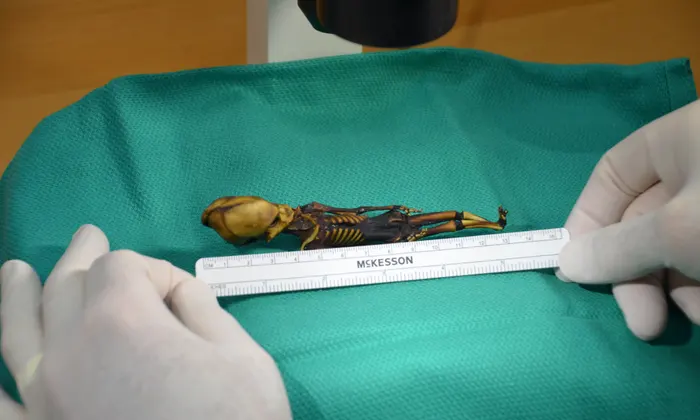In 2003, the naturally mummified remains of Ata were found near a ghost town in Chile’s Atacama Desert. Doctor Steven Greer, using x-ray and computed tomography (CT) imaging, analyzed her skeleton and provided bone marrow samples for further study. The DNA analysis conducted by immunologist Garry Nolan at Stanford University revealed that Ata’s genetic material was indeed human, dispelling the notion of extraterrestrial origins.

Unraveling the Genetic Abnormalities
To understand the cause of Ata’s unusual appearance, researchers at Stanford and the University of California, San Francisco analyzed her genome. The study discovered mutations in seven genes related to human growth, which likely contributed to her severe skeletal abnormalities and rapid bone growth. This suggests that Ata was most likely a human fetus who was either stillborn or died shortly after birth.
The Persistence of Alien Theories
Despite the scientific evidence pointing to Ata’s human origins, some individuals still hold on to the belief that she is extraterrestrial. The study’s findings and subsequent scientific consensus aim to dismiss these claims and put an end to the controversy surrounding Ata.
The Importance of Genetic Disorders and the Need for Understanding
Ata’s case serves as a reminder of the complex nature of genetic disorders and how they can lead to unusual physical features. Experts emphasize the potential for misinterpretation in archaeological and scientific investigations when genetic disorders are involved. The ongoing debate surrounding the “hobbits” discovered in Indonesia exemplifies the challenges in distinguishing genetic abnormalities from distinct species.

A Call for Respect and Proper Burial
Researchers and experts involved in the study advocate for the return of Ata’s remains to Chile and a respectful burial. They emphasize the importance of treating human remains with dignity and condemn the exploitation of such remains for personal gain or sensationalism.
In conclusion, the study sheds light on the true nature of the tiny mummy, Ata, dispelling the notion of her extraterrestrial origins. It highlights the significance of scientific analysis in understanding genetic disorders and emphasizes the need for respectful treatment of human remains.
